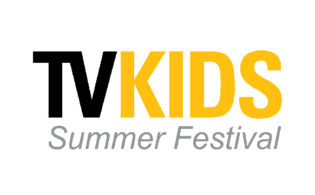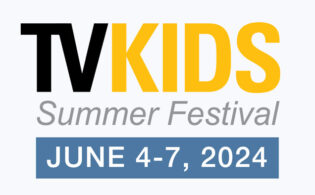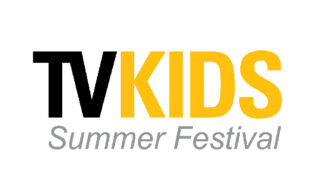Nickelodeon’s Migdalis Silva and Grupo Globo’s Luiz Filipe Figueira took part in the final panel of the TV Kids Summer Festival.
The session, which you can view here, saw Silva, VP and brand lead for Nickelodeon Latin America, and Figueira, head of programming and content strategy for kids at Grupo Globo, discuss their strategies in conversation with Rafael Blanco, the associate editor of TV Latina.
The panel opened with the executives discussing how their strategies have shifted as kids move more to nonlinear services. “The landscape has opened a door for amazing stuff we can do with the kids’ world,” Silva said. “They’re everywhere. As programmers, we must be very smart about where we put the content.” Nickelodeon is deploying a “smart windowing strategy,” she noted. “Not everything goes on the linear side. There’s content that is exclusive to the digital world. There’s content that goes exclusively to our streaming platform, Paramount+. We have content for the linear channels. We have content that goes strictly to our YouTube channel. It’s about how you plan, creating this windowing strategy for the content. We also invest a lot in events where we can interact with the viewers.”
Gloob, Globo’s flagship kids’ service, has been a “360-degree brand since its inception,” Figueira said. “We are the newest kids’ channel among all our competitors in Brazil. Back in 2013, a year after its launch and way before this consumption shift to nonlinear, we anticipated that trend and always had in mind that we needed to track kids wherever they were. Our programming and digital teams work closely to provide this interaction, be it on social media or external platforms such as YouTube. We evolved our strategy at the same time that kids’ consumption was shifting.”
On digital-first strategies, Silva pointed to Garden Academy, a preschool learning show developed with the Bénédict International Language School in Ecuador exclusively for the Noggin SVOD service. “It had such a great response that we commissioned more seasons and then tested it on the linear channel as a short-form, and it worked beautifully. Then we extended it to Paramount+.” Nick Snack, meanwhile, was created just for YouTube and was subsequently tested on linear.
Figueira noted, “We’ve successfully created several spin-offs in which we were able to try out different narratives, especially those that are digital-native, such as blogs, online gaming and so on. On Globoplay, we’ve been more and more inverting windows and testing content before it goes to linear. So depending on the concept and how the show is in line with Globo’s linear or nonlinear strategy, we’ll decide which window to premiere it in.”
On the role of acquisitions, Silva said there is a unit buying for the entire global footprint, while she and her team also make local acquisitions, notably in Brazil, where there is a domestic content quota. “As a company, we try to do everything globally. We used to make acquisitions independently, and then we realized it didn’t benefit the productions. It makes more success when you make a global acquisition, let’s say in the case of The Smurfs.”
As a local player, “it’s easier for us to make decisions and be as fast as possible to track and license or prebuy or make a co-production deal with international IPs that are super relevant in our territory,” Figueira said. “We’ve experienced enormous success with international brands, carving out international deals exclusively in Brazil. And, of course, our original strategy and IPs are key for us. We’re the only Brazilian kids’ channel.” It’s a 50-50 split between international acquisitions and local commissions, he noted.
On using data to inform programming decisions, Silva said, “It’s so necessary. We look through data every day, every week. We gain an understanding of the consumption habits of the audience. Especially now that there are so many windows and options, we need to know where the kids are. We need to know if they’re watching the linear channel, apps or YouTube channel. We need to understand where they are right now. We can determine what is driving that performance. Trends [in what kids are interested in] are amazingly important. You need to be top of mind with them and understand their world.”
“We’ve all become data addicts!” Figueira added. “It’s part of our routine,” with the company tracking habits across linear and nonlinear and hosting focus groups and off-air events. “It’s always key to get a real-life sense of what kids are feeling and looking forward to watching on TV. But beyond data, there’s always a human eye evaluating content and anticipating trends. We can gather all the data and information, but, you know, we still need that feeling for a show or a concept.”
On trends to watch for the remainder of the year and into 2023, Silva noted, “I think content creators today need to listen to their audience and see what they’re into. Especially now, with TikTok, everybody can produce content. It’s a big universe out there. It’s a matter of knowing what content you’re going to do. It can be cheap or expensive.”
“Our audience have become our main competitors today,” Figueira added. “It’s another level of being a protagonist, isn’t it? They want to host their shows. They want to speak up. It’s fantastic to see. One big challenge for us is that kids are more likely to watch shorter content. And for storytellers, it’s a challenge. Sometimes we can’t say what we want to say in 3 or 4 minutes. At the same time, all those platforms and services somehow look the same for kids. I think that brands will play a very important role in this shifting landscape, especially among kids. So the Nickelodeon, the Cartoon Network, the Gloob, it’s super important for kids, especially in this changing media landscape.”
 TVKIDS
TVKIDS






